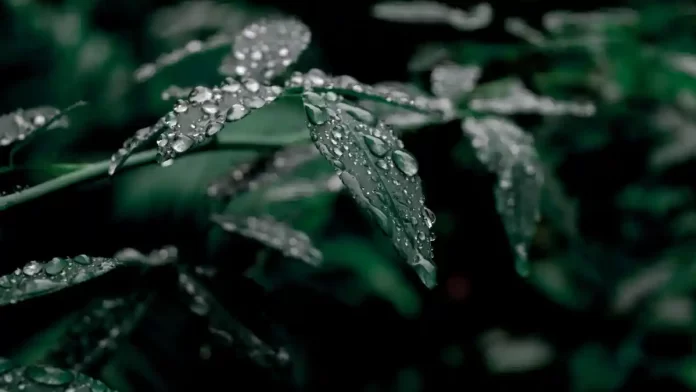
Have you ever noticed how certain sounds in nature, like the rustling of leaves or crashing ocean waves, have a captivating quality sound? This enchanting auditory experience can be attributed to something called green noise. Just as green is a middle ground in the visual spectrum, green noise occupies a middle position in the frequency spectrum of sound. In this article, we’ll learn about the green noise, and try to understand its unique characteristics, explore its real-world applications, and discover how it contributes to our perception of natural soundscapes.
Contents
What is Green Noise?
Green noise, also known as green random noise or power-law noise, is a type of noise that occurs across a wide range of frequencies, with the intensity decreasing as the frequency increases. It is called “green” because it is analogous to the color green in the visible light spectrum, where green light has a moderate frequency compared to other colors.
Green noise follows a power-law distribution, which means that the power spectral density decreases by a constant factor for each doubling of frequency. In other words, as the frequency increases, the amplitude or energy of the noise subsides. This makes green noise sound similar to a waterfall or rainfall.
Unlike white noise, which has a constant power across all frequencies, green noise has more energy at lower frequencies and less energy at higher frequencies. This characteristic can be found in various natural phenomena, such as wind, ocean waves, or the rustling of leaves.
Green noise is often used in audio applications, such as sound design, music production, and audio testing. It can be generated using various algorithms or filtered from other types of noise by applying a specific frequency response.
- Green noise is a special kind of sound that follows a specific pattern: the intensity decreases as the frequency gets higher. It has more energy at lower frequencies and less energy at higher frequencies.
- Green noise stands apart from other types of noise like white, pink, and brown noise. Unlike white noise, which has equal power across all frequencies, green noise has a power-law distribution where the energy levels decrease as the frequency increases.
- The name “green noise” draws a parallel to the visual spectrum, where green occupies a middle position. Similarly, green noise is situated in the middle range of audible frequencies.
The Spectrum of Natural Sound
- Green noise shares similarities with various natural sounds we encounter, such as wind, ocean waves, and rustling leaves. These sounds often have a similar power-law distribution of energy across different frequencies.
- This power-law distribution is what gives natural soundscapes their depth and realism. It allows us to sense distance, movement, and texture in our surroundings.
Generating and Manipulating Green Noise
- Green noise can be created using algorithms that generate a power-law distribution of frequencies. These algorithms combine different sinusoidal waves with varying frequencies and amplitudes.
- Modifying existing noise by filtering or equalizing it to emphasize or suppress specific frequencies is also possible, resulting in a green noise-like quality.
- Green noise finds applications in sound design, music production, and audio testing. It helps create realistic ambient backgrounds, adds depth to soundscapes, and evaluates the performance of audio equipment across different frequencies.
Real-World Applications of Green Noise
- Green noise has a calming effect, making it useful in soundscapes and relaxation techniques. It mimics the tranquility of natural environments, promoting a sense of peace.
- It can also be used for noise masking, where it helps block or reduce unwanted sounds, aiding in better sleep, focus, and relaxation. In sleep therapy, green noise creates a conducive environment for restful sleep.
- Green noise plays a role in environmental preservation by capturing and recreating natural soundscapes. It assists in conserving and documenting the sounds of our environment, contributing to research and conservation efforts.
Future Perspectives and Research
- Ongoing research focuses on advancing the techniques used to generate and manipulate green noise. These advancements aim to improve realism, flexibility, and control over the creation of green noise.
- The exploration of green noise in virtual reality and immersive audio experiences is another exciting avenue. It has the potential to enhance the immersive qualities of virtual reality, providing a more realistic and captivating audio experience.
- Further investigation into the therapeutic applications of green noise is needed. It may have promising benefits in stress reduction, cognitive enhancement, and overall well-being.
Conclusion
Green noise is a fascinating aspect of sound that adds depth and realism to our auditory experiences. It mimics the patterns found in nature, enriching our perception of the world around us. Whether it’s creating soothing soundscapes, promoting better sleep, or preserving our natural environments, it continues to captivate our imagination and contribute to the wonderful realm of sound. As research progresses, we can expect even more captivating uses and applications for green noise.
FACT CHECK: We strive for accuracy and fairness. But if you see something that doesn’t look right, please Contact us.
DISCLOSURE: This Article may contain affiliate links and Sponsored ads, to know more please read our Privacy Policy.
Stay Updated: Follow our WhatsApp Channel and Telegram Channel.











